Think Fit III Form + Weight Training = Body Sculpting
Well shaped shoulders and arms, a taut chest and a head held erect. Picture this in your mind’s eye. Does someone come to your mind ? Do you see confidence and a certain dignity in this person’s bearing ? If so, you can relate it to the description in the first sentence of my article.
This is a third in the series of my articles on how Form and Technique are key factors in making muscle training/weight lifting efficient and effective. Please do read the entire first article in the series and the first portion of the second before you proceed to this one.
Toned chest muscles are important for both men and women. While men enjoy showing off taut chests, women may for reasons of being endowed in the way they are, not be so comfortable doing that. Nevertheless firm chest muscles are a result of hard work and add to the way you look and carry yourself. They also play a big role in all your push and pull movements in your daily life. There is no denying that and hence no ignoring.
A myth I would like to clear here. A friend at the gym came up to me sometime ago and asked if breast sizes would decrease with weight lifting. To her and to many others who think so, my answer would be : weight lifting/muscle training will only firm chest muscles and not let them sag with the onset of advanced age.
Here are a few chest muscle exercises I have listed and have detailed the form and technique in doing them right. But before that a look at the Chest ( pectoralis major ) Muscle structure. Chest muscles are composed of upper, middle and lower fibers, being a major muscle group in the body.
This is not to say that certain chest exercises completely target only one or the other. Exercises for upper chest fibers will always involve the lower chest to some extent and vice versa.
- Remember to keep your tummy tucked in at all times and stand with legs hip width apart , soft on knees.
- Keep your shoulders down and relaxed at all times. Working out the muscles is quite different from tensing the muscles.
- Beginners can avoid attaching plates to the barbell. Do so as you progress.
Bench Press : Engage the chest muscles.
Form : Lying back down on the bench with your feet flat on the ground, hold the dumbbells/barbell above your chest, with palms facing the ceiling and slightly wider than the shoulders.
Technique : Push the dumbbells/barbell up towards the ceiling while consciously engaging (pushing with) the chest muscles rather than the shoulders or the arms. As you do more repetitions, you will feel the chest muscles quivering lightly, when properly engaged. Remember to keep the elbows soft and at shoulder level when you lower the barbell towards your chest. Similarly, remember to keep the barbell right above your chest when you raise it rather than taking it above the mid chest level. Engage the chest muscle mind fully by contracting them. Here, the anterior deltoids and tricep muscles get worked too incidentally. This exercise can be done on the machine too, but it is advisable to take the help of a trainer.
Incline Bench Press : Engage the chest muscles.
Form : Start with resting your back fully against the inclined bench and your feet flat on the ground.
Technique : Hold the dumbbells/barbell at shoulder level on both sides, elbows at 90 degrees and push the weights up without locking the elbows. The upper fibers of the chest muscles and the anterior deltoids get worked most. The lower fibers will feel the load , but at a lesser level.
Decline Bench Press : Engage the chest muscles.
Form : Lie down with your back fully rested against the declined bench, your feet firmly supported by the foot-rest. Hold the dumbbells/barbell slightly wider than shoulder width.
Technique : Push the weights up against the ceiling as you would in the regular Bench Press. Fitness experts do not recommend this exercise for beginners. Those at the intermediate or advanced level of fitness can do this. The middle and the lower fibers get worked most.
People with low blood pressure issues, please avoid this exercise.
Flat Bench Flys : Engage the chest muscles.
Form : Lying back down on the bench, with feet on the ground, begin with holding dumbbells, palms facing each other above your chest. Elbows rounded please throughout the exercise.
Technique : Move the palms with the weights away from each other towards your sides. Return to starting position. The range of motion would depend on the strength and flexibility of your chest muscles. Even so, a word of caution to those that extend the arms fully – it can lead to injury. The image below shows the model extending her arms to her full capacity, but as you can see, she is in an advanced stage of fitness.
NOTE : Avoid using the heavy weights that you used during the Bench Press. Use lighter weights to avoid injury.
Incline Bench Flys : Engage the chest muscles.
Form : With your back rested fully against the incline bench and feet placed firmly on the ground, hold the weights in front of you, palms facing each other.
Technique : Extend weights to your sides just as you would in Flat Bench Flys exercise, the difference being, you hold the eights in front of you and not above you. Return to starting position. The upper fibres of the chest muscles and the anterior deltoids get worked the most.
Decline Bench Flys : Engage the chest muscles.
Form : Lie down with your back rested fully on the decline bench with your feet firmly supported by the footrest. Hold the weights above your chest, palms facing each other.
Technique : Extend your arms with the weights towards your sides as much as your range of motion allows you to without locking your elbows. The middle and the lower fibres get worked. This again not recommended for beginners.
Peck Deck Flys / Seated Machine Fly : Engage the chest muscles.
This is very similar to the Flat bench Fly except that you are seated. Most suitable for beginners as the lever or the machine is fixed and therefore more controlled.
Form : Sit with your back and hips supported firmly by the back rest pads. With feet placed firmly on the ground, hold the handles in both hands by the sides such that the elbows are soft and are at chest level. Keep your upper arms and fore-arms parallel to the floor.
Technique : Bring the handles together in front of you consciously engaging the chest muscles. Let the movement be smooth and avoid clanging the handles when they are brought together. Slowly return to the starting position. Remember to extend only as much as to feel a stretch in your pecks.
Straight Arm Dumbbell Pullover : Engage the chest muscles.
Form : Lie down with your back resting on the flat bench and feet firmly on the ground. Hold a dumbbell/ dumbbells in both hands just above your chest. This exercise can be done with a barbell and plates attached, but that is for the advanced.
Technique : Extend the arms across your head in such a way that they are in line with the head. Some over-extend as in the pic above, but that depends upon their goals and fitness levels. Keep your elbows soft and do not over extend. Return to starting position. The upper fibers get worked as also the tricep muscles to a certain extent.
Cable Cross Over/ Cable Cross Press : Engage the chest muscles.
Form : Stand with your hands clasping the cable pulleys on both sides. Take a step forward with one leg and lean forward.
Technique : Now bring your palms close to each other in front of you at your chest level or slightly lower, engaging or contracting your chest muscles, just as you would do in the Bench Press. Return to starting position. Remember not to extend your arms beyond the shoulders when you return to starting position.
Push Up :
The simplest of the chest exercises, it uses the body weight to give the workout. Beginners can start with pushing against the wall or a fixed bar. Stand with your legs hip width apart away from the wall and arms slightly wider than the shoulder width, palms pressed against the wall/bar. Bend the elbows and push as you gently lean forward, moving your body towards the wall/bar almost touching the surface. Remember to keep the body in a straight line. You may have to lift your heels off the ground while keeping the toes in place. Push your body back to starting position slowly.
Floor Push Up is done with your toes on the ground and your palms on the ground, slightly wider that shoulder width. With abs held tight/tucked in, bend the elbows and lower your body parallel to the floor, then push against the ground to lift it up. Keep the elbows soft, do not lock them when you raise yourself. Head, neck and the spine should all be in a straight line.
If in the beginning you find it hard to do these floor Pushups, you could try Modified Pushups as shown below.
If you are travelling or do not have access to a gym, go ahead and do this exercise. All you need is yourself and the floor or the wall.
More muscle groups in my next few posts. If you like tips on any specific exercise/muscle, do post it in your comments and I will feature it.
Wishing Wellness and Fitness. Think Fit
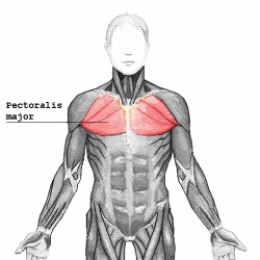
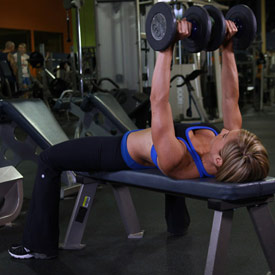
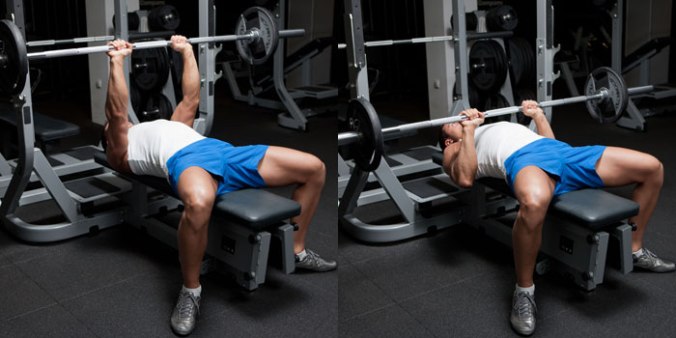
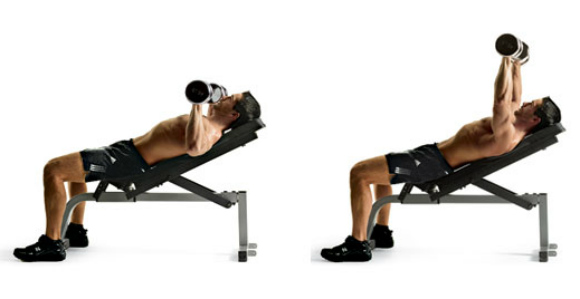
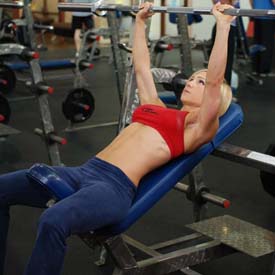
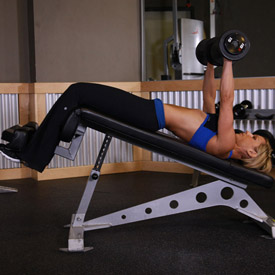
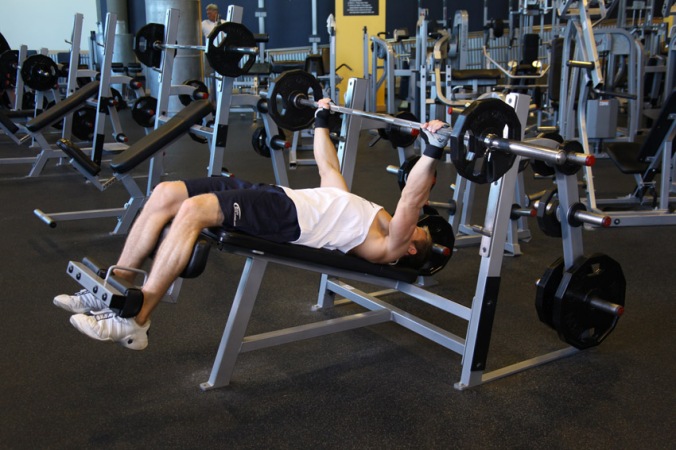
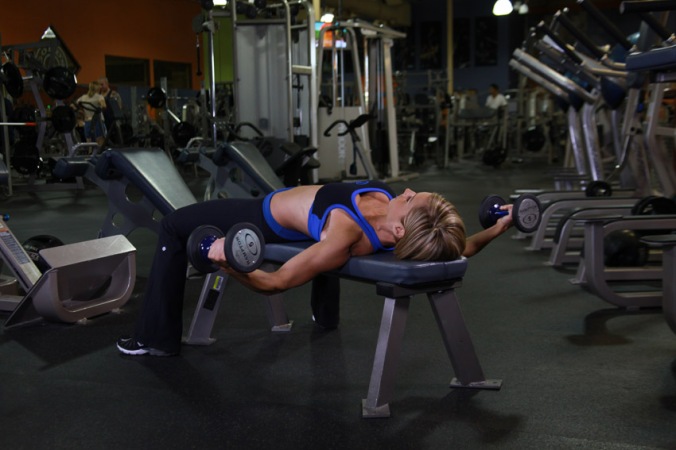
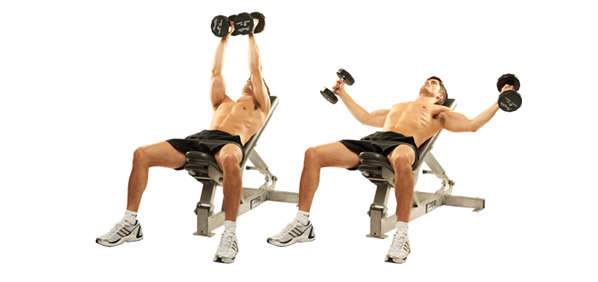
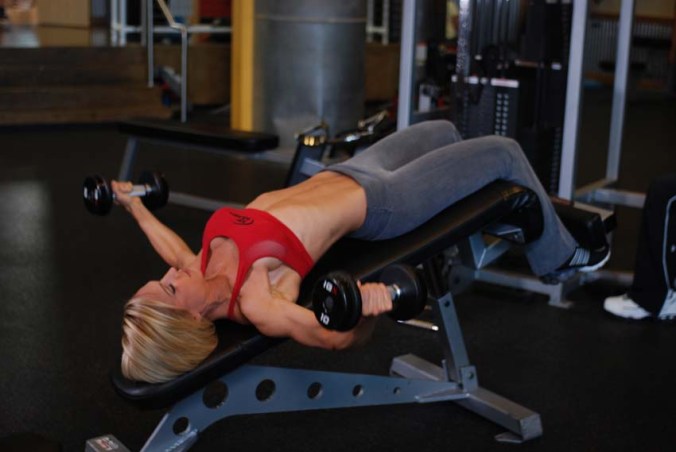
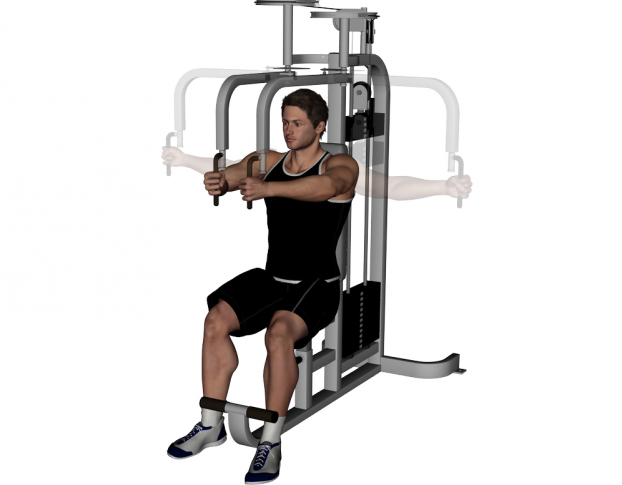
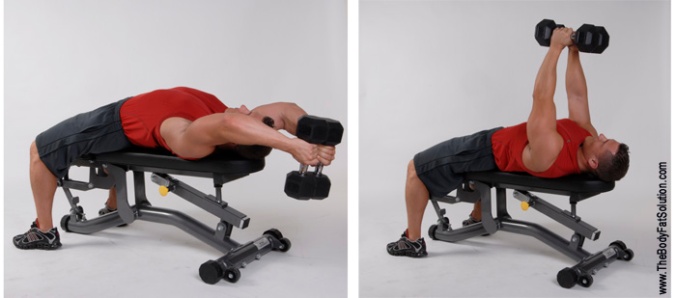
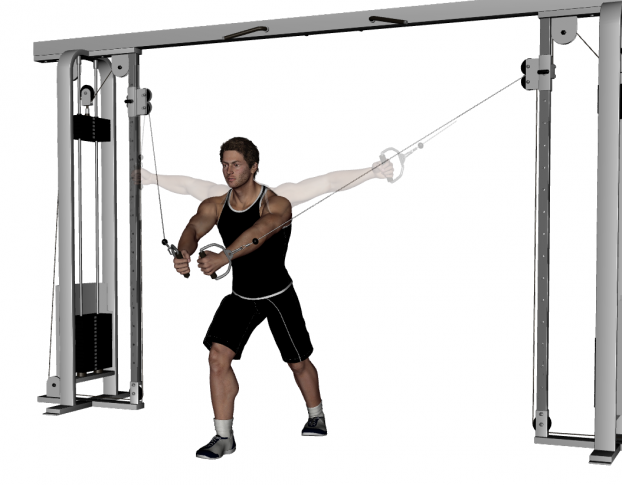
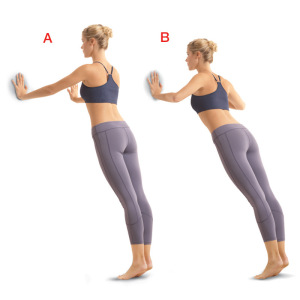
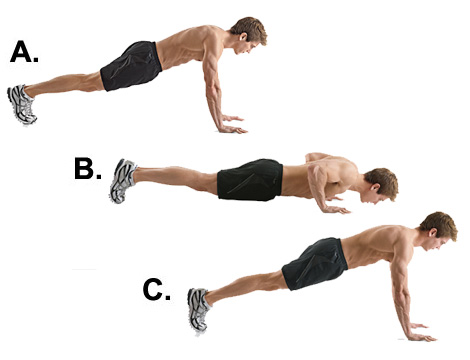
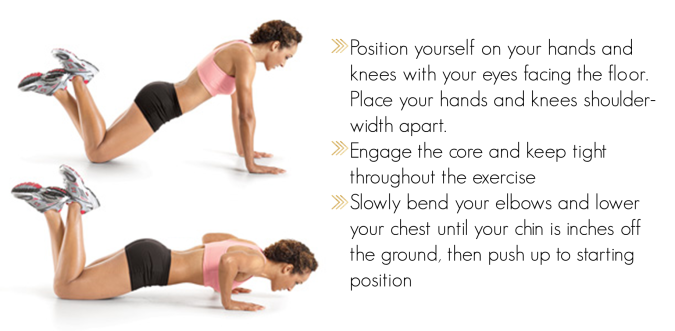
Thanks, great exercises!
LikeLike
Thank you for the comment and the interest !
LikeLike